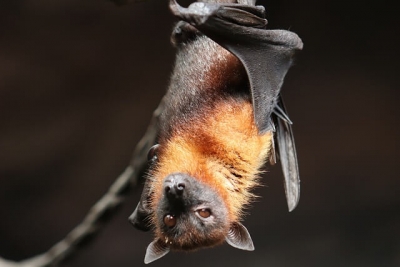
The scientific name for bats is Chiroptera, which is Greek for “hand wing.” That’s because bats have four long fingers and a thumb, each connected to the next by a thin layer of skin. They are the only mammals in the world that can fly, and they are remarkably good at it. Their flexible skin membrane and movable joints allow them to change direction quickly and catch mosquitoes in midair.
There are two main types of bats: microbats and megabats. Most bats are microbats, which eat insects like moths, that come out at night. Vampire bats are the only species of microbats that feed on blood rather than insects. But not to worry—they prefer to drink from cattle and horses, not humans.
To navigate dark caves and hunt after dark, microbats rely on echolocation, a system that allows them to locate objects using sound waves. They echolocate by making a high-pitched sound that travels until it hits an object and bounces back to them. This echo tells them an object’s size and how far away it is.
In contrast, megabats live in the tropics and eat fruit, nectar, and pollen. They have larger eyes and a stronger sense of smell than microbats but have smaller ears because they don’t echolocate. There are more than 150 species of megabats, which are usually, but not always, larger than microbats.
Credit : National Geographic
Picture Credit : Google




